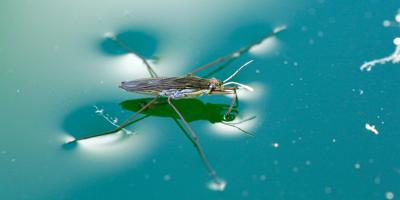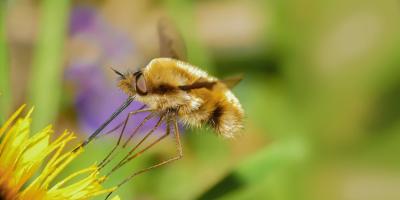Black Widows Brave the Cold -- New England’s Surprise Pest

As the temperature drops as you travel North, so does the risk of being bitten by venomous animals. After all, poisonous creatures aren’t exactly known for skittering or slithering through snowbanks. They simply don’t thrive in colder climates, with the exception of very few species of snakes.
Black widows aren’t an exception to this, so how do they end up in New England homes, where the only frightful thing homeowners are expecting is the weather?
Black Widows and Blizzards?
First off, black widow spiders are capable of surviving the frozen winters of the north by holing up in barns, sheds, or cellars, and going into a state known as overwintering, where their metabolic rate slows considerably to conserve energy until their food sources come back out in the spring.
But that still doesn’t account for the vast numbers of encounters New Englanders have with the spiders every year. The real problem, it seems, starts at the grocery store.
Bagging More Than You Bargained For
Produce is shipped to New England from across the country as almost 10 million tons are imported to the United States internationally every year, which means critters from all over the world hitch a ride in crates of fruit and vegetables and into the supermarket. It’s then a small leap—literally—from your kitchen shelf to other areas in your home.
Grapes, in particular, are notorious for transporting black widow spiders to the Northeast and beyond. One woman in Connecticut and another in Omaha shared similar nightmares when black widows crawled out of each of their bags of grapes in 2018.
By some estimates, about 800 people in the United States find black widow spiders nested in grapes annually. Truth is, the average American doesn’t just find—but actually eats—upwards of 250,000 bugs or bug parts every year, in foods ranging from fresh fruits and veggies to chocolate, peanut butter, flour, and coffee.
The next time you’re at the grocery store, it might be a good idea to check for more than just freshness when you’re inspecting the produce. Be sure to remove bunches from their bags and give them a very close inspection. Bruising, mold and soft spots especially make fruits and vegetables more attractive to spiders and insects.
Even more importantly, always wash produce thoroughly. Place grapes in a colander and give them a vigorous shower with the sink sprayer, inspecting as you wash. If you do happen to find any creepy crawlies, try to identify the invader before you seal the produce in a Ziplock or plastic bag and dispose of immediately in an outdoor trash receptacle.
You’ll know if you’re dealing with a black widow by the hour-glass shaped marking on the underside of its abdomen. Their bodies are shiny, and black, and about a half inch in length.
Although the black widow has earned its name by the females sometimes killing and eating the males of the species after mating, it is extremely unlikely that they will bite unless you mistakenly give them a squeeze when reaching for a grape, or accidentally sit on them.
Notably, only the female of the species is venomous, carrying venom 15 times more powerful than a rattlesnake’s.
If you do happen to receive a bite from a black widow, as long as you seek medical attention immediately, there is no major concern of death. No one has died from a black widow bite in over ten years. Only small children, the elderly and the infirm run any real risk when bitten.
If you happen to find a spider in your next bag of groceries and are unsure if it’s a black widow or not, send a picture to Dr. Gary and he’ll help identify it.



